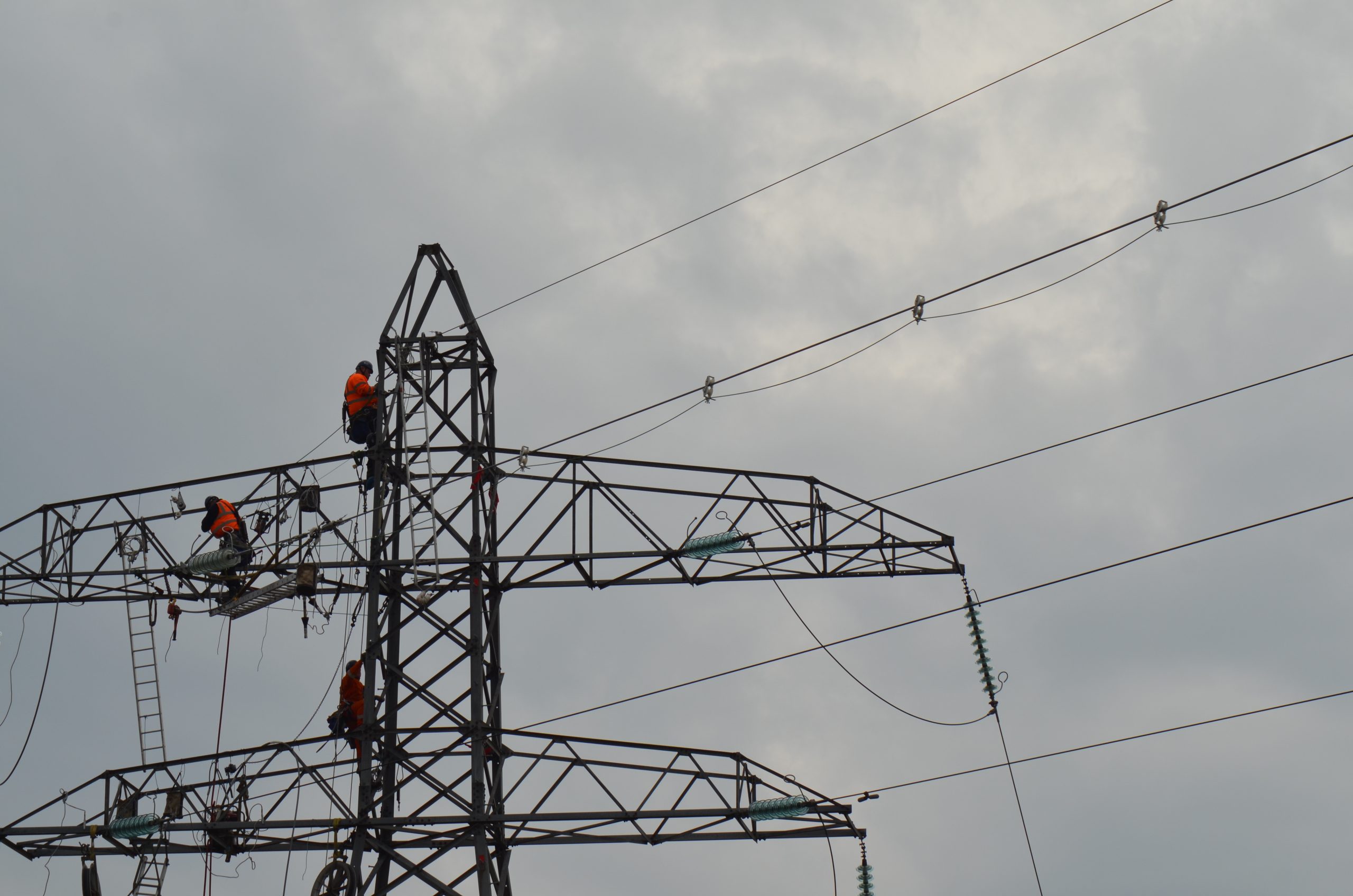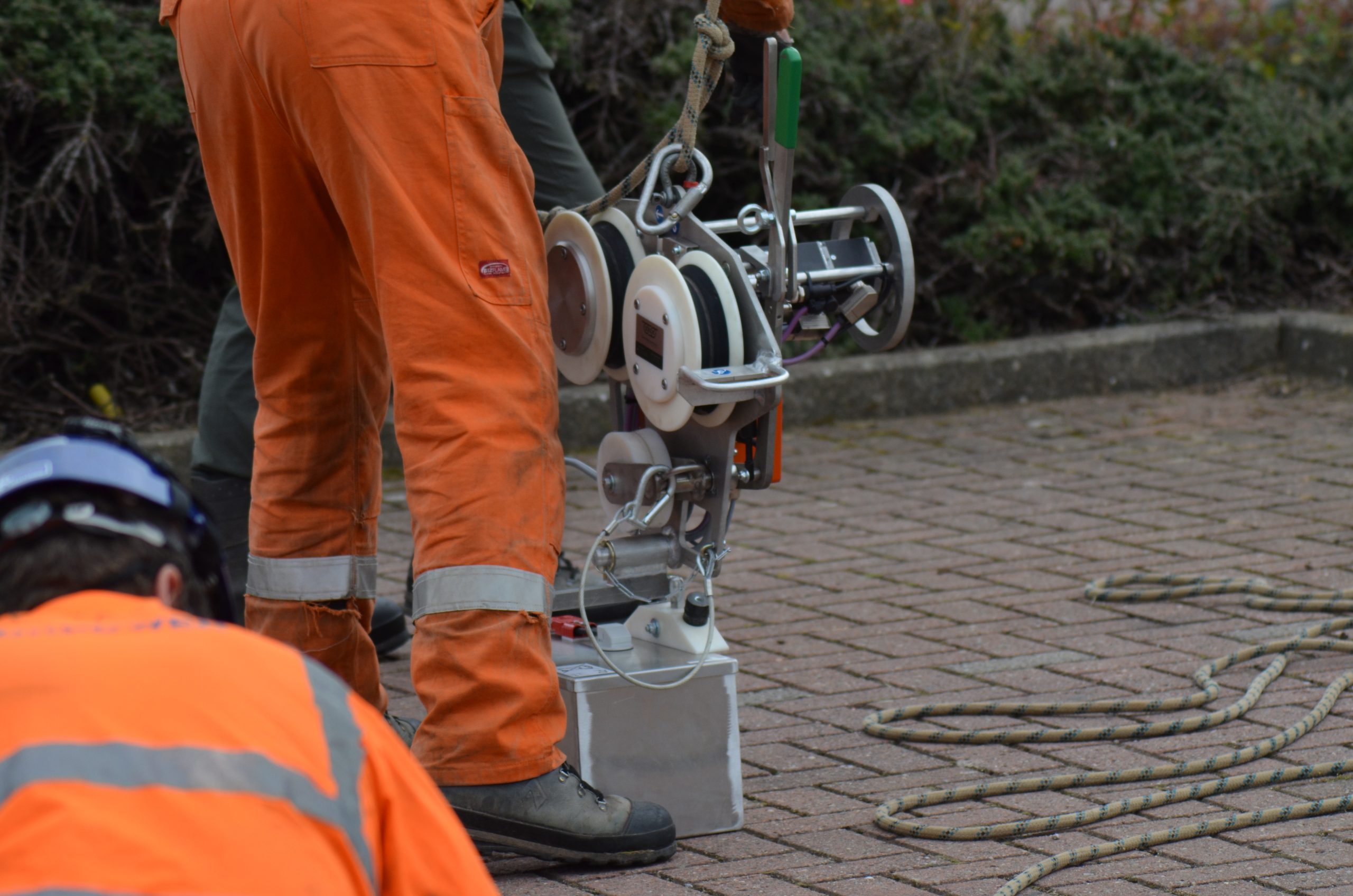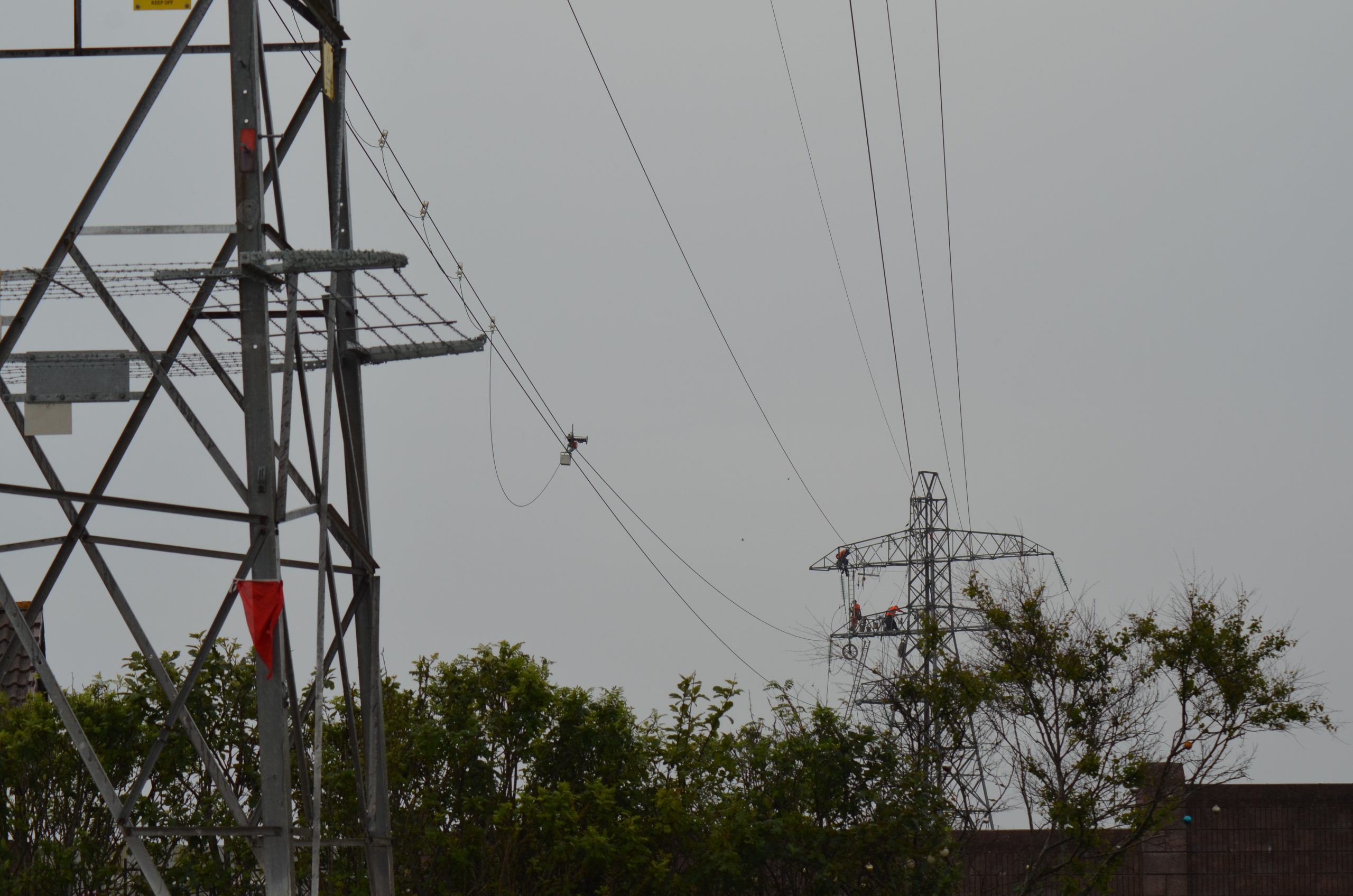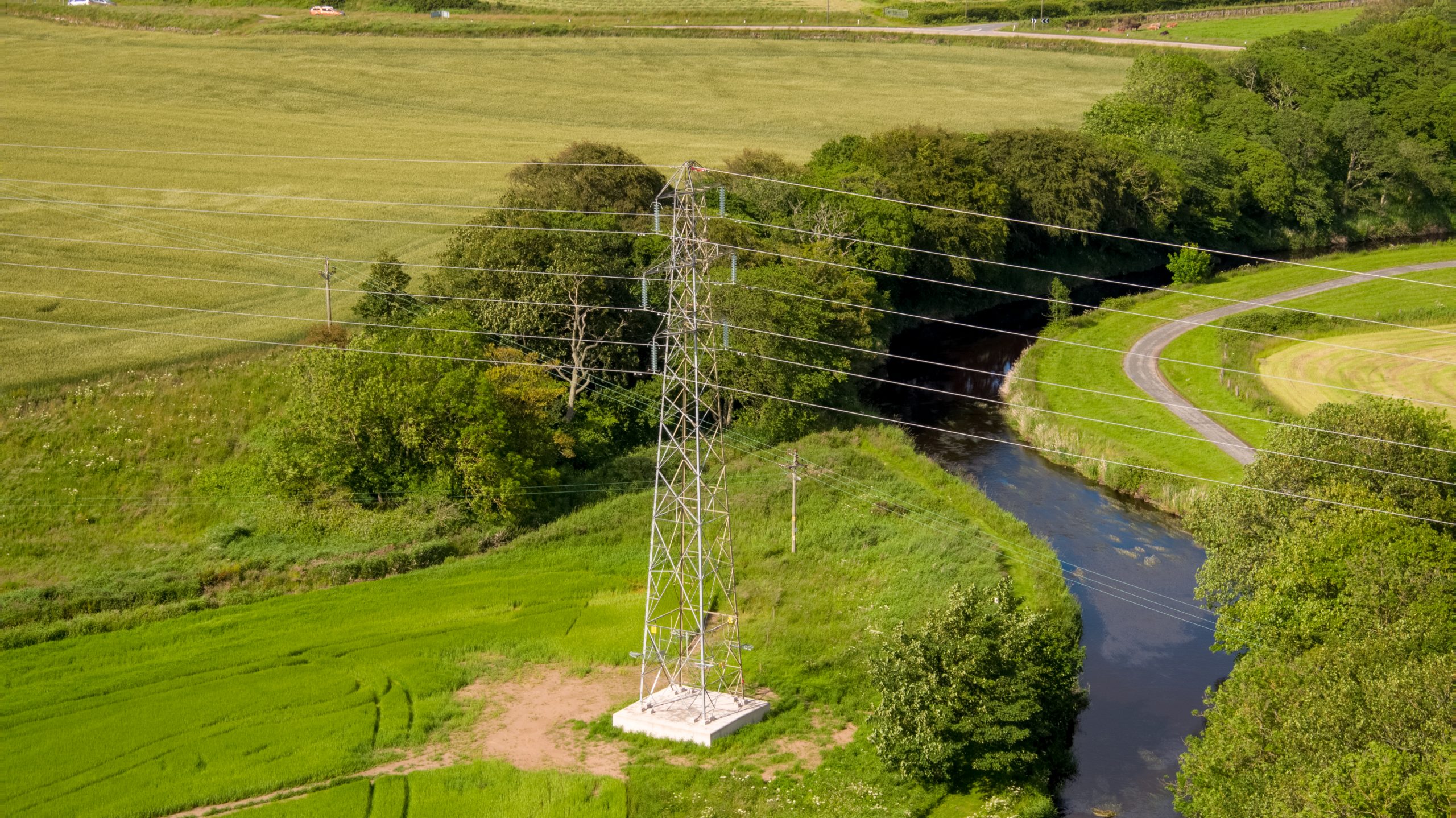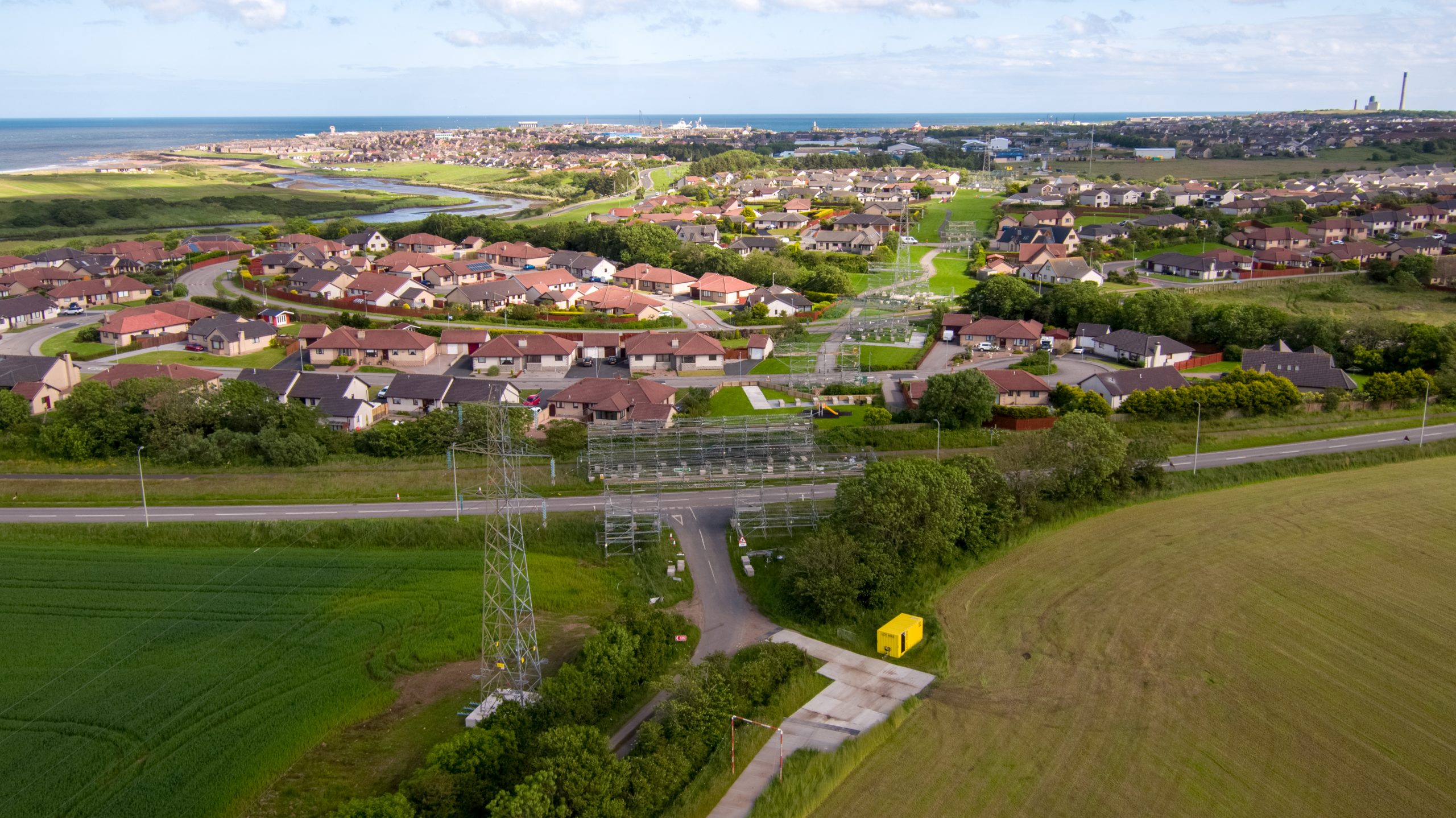St. Fergus-Peterhead Grange 132kV Refurbishment
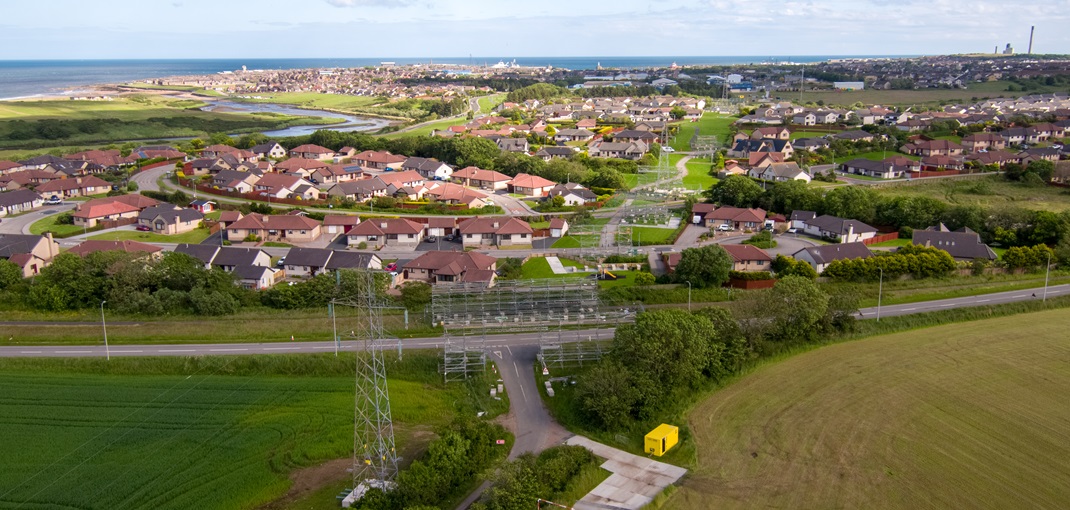
Scotland
St. Fergus-Peterhead Grange 132kV Refurbishment
Having been built in 1958, asset health inspections of the 132kV DC overhead line between St. Fergus and Peterhead Grange substations identified the need to replace the phase and earth conductors, strengthen steelwork and upgrade foundations, with a likelihood that insulators would require replacement to meet design criteria.
With a combined circuit length of 15.6 km, NorPower was contracted to progress the design process based on an initial design report provided by the Client, and to replace 7.8km of DC three phase OHL with 1 x 300 mm2 AAAC UPAS sub-conductor per phase and replace 7.8 km earthwire with 48 fibre high strength KEZIAH OPGW.
Due to these circuits being crucial to the transmission network, one circuit had to remain live, so a temporary diversion was designed and installed to maintain supply between Peterhead and Peterhead Grange whilst creating double circuit outage on the section towards St Fergus, thereby enabling re-conductoring and earthwire replacement on the latter section.
Two towers required 3m body extensions to be installed to overcome ground clearance infringements. In order to meet the circuit constraints, a SBB mast was required at one of these towers, creating a temporary bypass to maintain supply, whilst the new steelwork sections were installed on the tower.
Degraded steelwork was replaced where required, with strengthening steelwork installed on 7 towers. 25 foundations were upgraded, 9 of which were raft type due to issues such as ground conditions and buried services.
All insulators and fittings were replaced as well as all tower furniture.
Pre- and during construction ecological and environmental surveys and monitoring were carried out to identify potential for impacts; Although it was identified that there was an active badger sett in proximity to one of the towers, it was out with the required buffer zone and so special protection measures were not required however, staff training was undertaken to ensure the sett was not impacted on. A river in close proximity to one of the structure foundations that required upgrade saw the foundation being designed to remove/minimise potential for impact.
Large sections of the OHL route are located within arable fields which required advance discussion and close co-operation with the farmers to minimise disruption to operations and manage safety concerns. Temporary trackways were laid to minimise crop damage and access route widths. Other sections of the route are in areas of high-level public access, crossing various areas in a core path network, private residential areas, an industrial estate and Grange cemetery. Taking due cognisance of maintaining access where possible, protection of public safety is high priority, resulting in some unavoidable road and path closures and diversions which were managed in liaison with the relevant stakeholders, including advance public warning of planned mitigation measures. However, it was deemed essential that access to the cemetery was maintained and so a catenary support system was used for reconductoring the section of the OHL that passes over it.
Tower painting, to lengthen the lifespan of the structures, has been delayed due to forecasted weather conditions preventing site operations on several occasions. This work will be undertaken at a future date.

